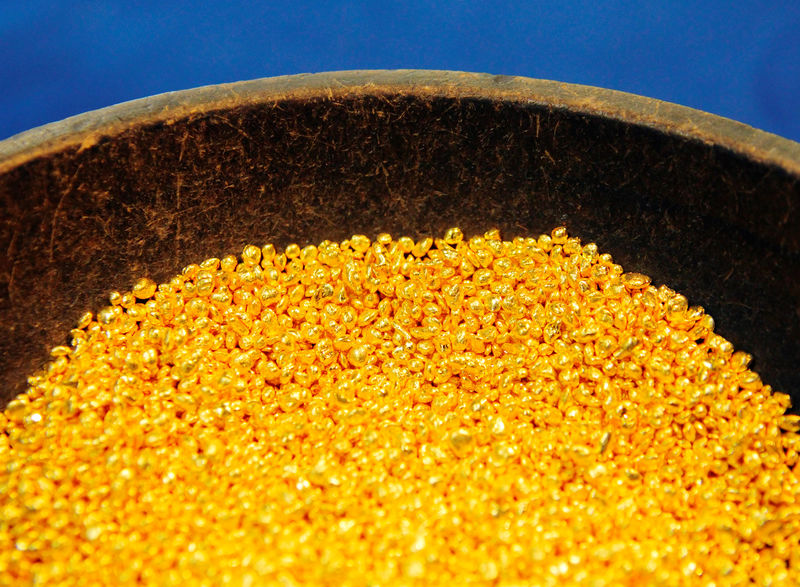Investing.com — Gold prices fell slightly in Asian trading on Tuesday, but remained near record highs amid growing belief that the Federal Reserve will cut interest rates by a wide margin this week.
The yellow metal hit a record high on Monday and was trading just below that level as traders began pricing in a 50 basis point rate cut by the Fed on Wednesday. Gold’s strength came after weakness in the dollar and government bond yields.
fell 0.2% to $2,578.03 per ounce, while the December term fell 0.1% to $2,605.05 per ounce at 23:56 ET (03:56 GMT).
Gold benefits from bets on a 50 bp cut
Spot prices hit a record high of $2,589.69 an ounce on Monday after the dollar fell on bets on a bigger rate cut. The Fed will make a decision on Wednesday.
Traders were pricing in a 68% chance that the Fed will cut rates by 50 bps at the end of a meeting on Wednesday, and it showed a 32% chance of a 25 bp cut.
Lower interest rates are a good sign for gold and other precious metals as they reduce the opportunity cost of investing in non-performing assets. The Fed is widely expected to announce the start of an easing cycle this week, which could see rates fall by more than 100 basis points by the end of the year.
The yellow metal also benefited from a large amount of central bank buying this year, especially in emerging markets. As a result, precious metal prices performed better than other precious metals.
rose 0.2% to $990.50 per ounce, while holding steady around $31.145 per ounce.
Copper ticks higher, Chinese stimulus in focus
Among industrial metals, copper prices rose slightly on Tuesday, partly thanks to the weaker dollar and the push for lower interest rates.
But gains in the red metal were held back by lingering concerns about top importer China, following a series of weak economic data from the country in August.
The benchmark on the London Metal Exchange rose 0.1% to $9,388.50 per tonne, while the benchmark rose 0.3% in one month to $4.2770 per pound.
Weak data from China reinforced expectations that Beijing will have to implement more stimulus measures to support the economy.


